-
 Bitcoin
Bitcoin $76,654.6360
-7.12% -
 Ethereum
Ethereum $1,502.0829
-15.11% -
 Tether USDt
Tether USDt $0.9995
0.00% -
 XRP
XRP $1.7730
-13.91% -
 BNB
BNB $544.1597
-6.75% -
 USDC
USDC $1.0000
0.02% -
 Solana
Solana $102.4707
-11.10% -
 TRON
TRON $0.2260
-5.55% -
 Dogecoin
Dogecoin $0.1398
-13.45% -
 Cardano
Cardano $0.5447
-13.02% -
 UNUS SED LEO
UNUS SED LEO $8.9156
-1.19% -
 Toncoin
Toncoin $3.0334
-7.50% -
 Chainlink
Chainlink $10.8622
-12.21% -
 Stellar
Stellar $0.2212
-10.25% -
 Avalanche
Avalanche $15.6219
-8.32% -
 Shiba Inu
Shiba Inu $0.0...01097
-7.56% -
 Sui
Sui $1.8534
-12.28% -
 MANTRA
MANTRA $6.1325
-1.44% -
 Hedera
Hedera $0.1377
-10.68% -
 Polkadot
Polkadot $3.4190
-11.84% -
 Dai
Dai $0.9999
0.00% -
 Bitcoin Cash
Bitcoin Cash $263.9712
-9.33% -
 Ethena USDe
Ethena USDe $0.9987
-0.03% -
 Litecoin
Litecoin $67.4159
-14.99% -
 Bitget Token
Bitget Token $3.9261
-10.97% -
 Pi
Pi $0.5602
-9.91% -
 Monero
Monero $193.8564
-8.31% -
 Hyperliquid
Hyperliquid $10.3167
-8.15% -
 Uniswap
Uniswap $4.9596
-11.99% -
 OKB
OKB $49.8609
-6.94%
How to use K-line charts to capture cryptocurrency buying and selling points?
K-line charts are essential for crypto trading, showing price movements and patterns like hammers and engulfing patterns to guide buying and selling decisions.
Mar 28, 2025 at 05:43 pm
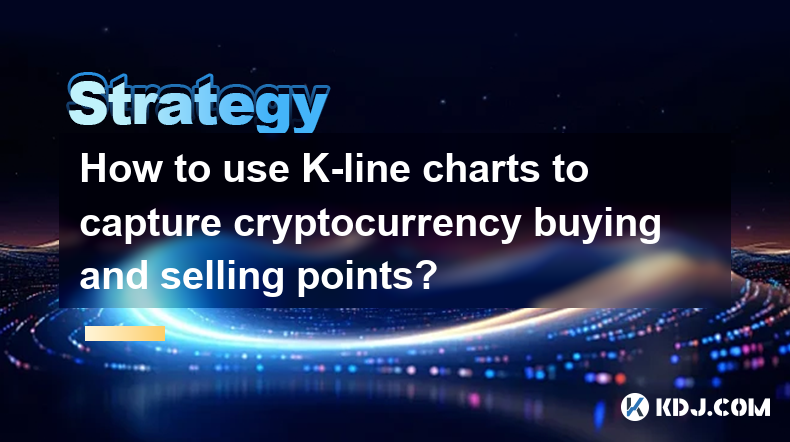
Understanding K-Line Charts in Cryptocurrency Trading
K-line charts, also known as candlestick charts, are a fundamental tool for cryptocurrency traders. They visually represent price movements over a specific period, providing insights into market sentiment and potential buying and selling opportunities. Each candlestick represents a specific timeframe (e.g., 1-minute, 1-hour, 1-day), showing the opening, closing, high, and low prices. Understanding how to interpret these elements is crucial for successful trading. The body of the candlestick indicates the price difference between the opening and closing prices, while the wicks (shadows) show the high and low prices reached during that period.
Identifying Bullish Candlestick Patterns
Bullish patterns suggest a potential upward price movement. These patterns often indicate growing buyer interest and a shift in market sentiment. Some common bullish patterns include:
- Hammer: A small body with a long lower wick, suggesting buyers stepped in to prevent a further price drop.
- Inverted Hammer: Similar to a hammer but with a long upper wick, indicating a strong buying pressure after an upward move.
- Morning Star: A three-candlestick reversal pattern, signifying a potential bullish trend reversal after a downtrend. It consists of a downtrend candlestick, a small body candlestick, and a bullish candlestick.
- Engulfing Pattern (Bullish): A larger bullish candlestick completely engulfs a preceding bearish candlestick, suggesting a shift in momentum.
Recognizing these patterns requires practice and experience. Combining them with other technical indicators can improve accuracy.
Identifying Bearish Candlestick Patterns
Bearish patterns signal a potential downward price movement, suggesting increasing selling pressure. These are equally important to identify to avoid losses or to potentially short sell (if you understand the risks involved). Some common bearish patterns include:
- Hanging Man: A small body with a long lower wick, appearing at the top of an uptrend, indicating potential selling pressure.
- Shooting Star: Similar to a hanging man but with a long upper wick, suggesting sellers are pushing the price down after an upward move.
- Evening Star: A three-candlestick reversal pattern, indicating a potential bearish trend reversal after an uptrend. It’s the opposite of a Morning Star.
- Engulfing Pattern (Bearish): A larger bearish candlestick completely engulfs a preceding bullish candlestick, suggesting a shift in momentum towards a downtrend.
These patterns are warning signs and should be considered alongside other technical and fundamental analyses.
Using Support and Resistance Levels with K-Line Charts
Support and resistance levels are crucial for identifying potential buying and selling points. Support is a price level where buying pressure is strong enough to prevent further price declines. Resistance is a price level where selling pressure prevents further price increases.
Identifying these levels on a K-line chart involves observing previous price action. Breaks above resistance levels often signal bullish momentum, while breaks below support levels often signal bearish momentum. However, these levels can change dynamically, so constant monitoring is essential.
Combining K-Line Charts with Other Indicators
While K-line charts provide valuable information, combining them with other technical indicators enhances accuracy. Popular indicators include:
- Moving Averages (MA): These smooth out price fluctuations, helping identify trends and potential support/resistance levels.
- Relative Strength Index (RSI): This momentum indicator helps identify overbought and oversold conditions.
- MACD (Moving Average Convergence Divergence): This indicator identifies momentum changes and potential trend reversals.
Using these indicators in conjunction with candlestick patterns improves the probability of identifying accurate buying and selling signals.
Volume Analysis with K-Line Charts
Volume analysis provides crucial context to candlestick patterns. High volume accompanying a price increase confirms the strength of the bullish move, while high volume accompanying a price decrease confirms the strength of the bearish move. Low volume during price movements suggests weak momentum and potentially a lack of conviction behind the price action. Always consider the volume when interpreting candlestick patterns.
Risk Management and Position Sizing
Even with careful analysis, losses are inherent in trading. Effective risk management is crucial. Never invest more than you can afford to lose. Position sizing, or determining the appropriate amount to invest in a single trade, is vital for managing risk. Diversification across different cryptocurrencies also reduces overall risk.
Frequently Asked Questions
Q: Are K-line charts reliable for predicting cryptocurrency price movements?
A: K-line charts are a valuable tool for identifying potential buying and selling points, but they are not foolproof predictors of future price movements. They should be used in conjunction with other technical and fundamental analysis.
Q: How do I choose the right timeframe for my K-line chart?
A: The optimal timeframe depends on your trading strategy and risk tolerance. Shorter timeframes (e.g., 1-minute, 5-minute) are suitable for short-term trading, while longer timeframes (e.g., 1-day, 1-week) are better for long-term investments.
Q: What are the limitations of using only K-line charts for trading decisions?
A: Relying solely on K-line charts can be risky. They provide a visual representation of price action, but they don't consider fundamental factors like market news, regulatory changes, or technological advancements that can significantly impact cryptocurrency prices. A holistic approach incorporating fundamental analysis is recommended.
Q: Can I use K-line charts for all types of cryptocurrencies?
A: Yes, K-line charts can be used to analyze the price movements of any cryptocurrency. However, the specific patterns and indicators may vary depending on the cryptocurrency's volatility and market dynamics.
Q: Where can I find reliable K-line charts for cryptocurrencies?
A: Many cryptocurrency exchanges and trading platforms offer K-line charts as a standard feature. Popular choices include Binance, Coinbase, Kraken, and others. You can also find charting tools on dedicated websites and applications.
Q: How long does it take to become proficient in interpreting K-line charts?
A: Proficiency in interpreting K-line charts takes time and consistent practice. Start with learning the basics of candlestick patterns and support/resistance levels. Then, gradually incorporate other technical indicators and refine your analysis based on your experience. Backtesting your strategies using historical data is crucial for improving your skills.
Disclaimer:info@kdj.com
The information provided is not trading advice. kdj.com does not assume any responsibility for any investments made based on the information provided in this article. Cryptocurrencies are highly volatile and it is highly recommended that you invest with caution after thorough research!
If you believe that the content used on this website infringes your copyright, please contact us immediately (info@kdj.com) and we will delete it promptly.
- XRP Analysis: What the Lower Timeframes Tell Us
- 2025-04-07 21:35:12
- Ozak AI (OZAK) Price Prediction: Can It Hit $1?
- 2025-04-07 21:35:12
- Cryptocurrency prices sank early Monday (April 7) in Asia, collateral damage in America's trade war.
- 2025-04-07 21:30:12
- Meme Projects Like Dogecoin (DOGE), Shiba Inu (SHIB), and Bonk (BONK)
- 2025-04-07 21:30:12
- HashBeat App: Top Regulated Crypto Cloud Mining Platform in 2025 and Offers Free Bitcoin Mining Rewards with Daily Payouts
- 2025-04-07 21:25:12
- Shiba Inu (SHIB) Price Prediction: Will the Memecoin Bounce Back?
- 2025-04-07 21:25:12
Related knowledge
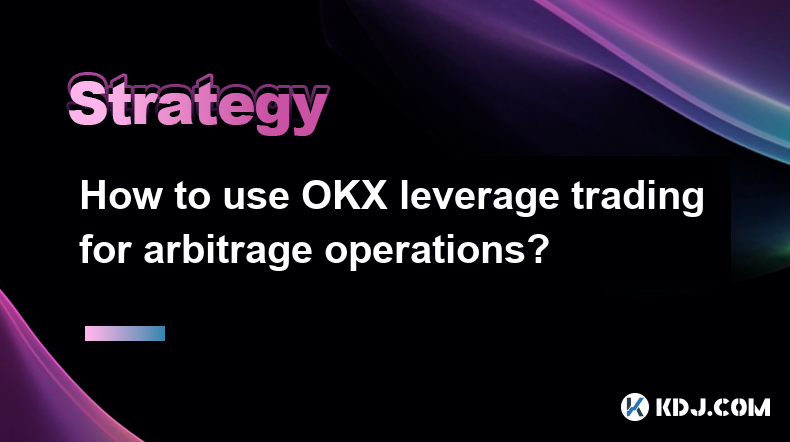
How to use OKX leverage trading for arbitrage operations?
Apr 07,2025 at 09:50am
Introduction to OKX Leverage TradingOKX is a leading cryptocurrency exchange that offers a wide range of trading options, including leverage trading. Leverage trading allows traders to amplify their exposure to the market by borrowing funds from the exchange. This can potentially increase profits but also comes with higher risks. In the context of arbit...
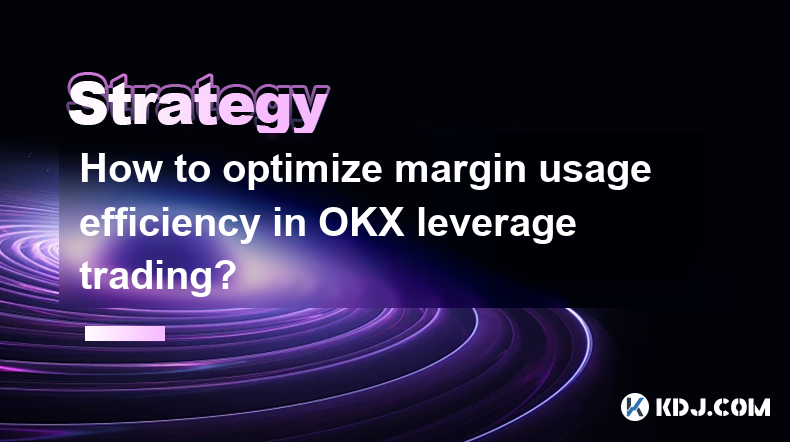
How to optimize margin usage efficiency in OKX leverage trading?
Apr 04,2025 at 03:21pm
Margin usage efficiency is a critical aspect of leverage trading on platforms like OKX, where traders aim to maximize their returns while managing risk. Understanding how to optimize margin usage can significantly enhance your trading performance. This article will delve into various strategies and techniques to help you make the most out of your margin...
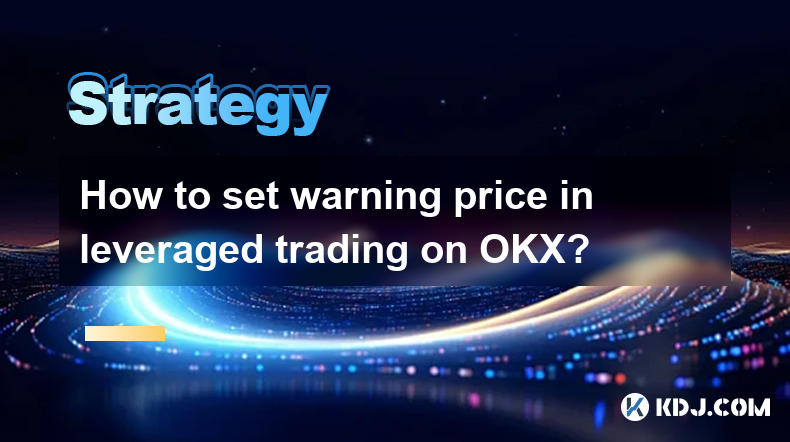
How to set warning price in leveraged trading on OKX?
Apr 07,2025 at 06:49am
Leveraged trading on OKX can be an exciting yet risky endeavor. One of the key tools to manage risk is setting a warning price. A warning price alerts you when your position reaches a certain level, allowing you to take action before it's too late. In this article, we will guide you through the process of setting a warning price in leveraged trading on ...
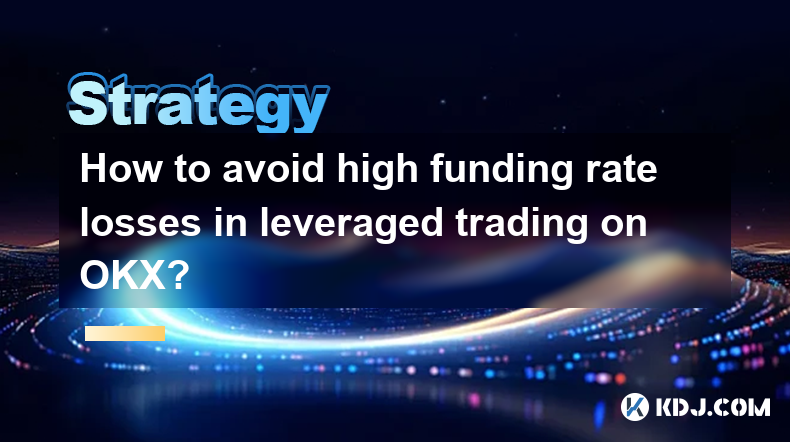
How to avoid high funding rate losses in leveraged trading on OKX?
Apr 04,2025 at 05:28pm
Understanding Funding Rates in Leveraged Trading on OKXFunding rates are a critical component of leveraged trading on platforms like OKX. They represent the periodic payments made between traders to maintain the balance between the futures price and the spot price of the underlying asset. When trading with leverage, understanding and managing funding ra...
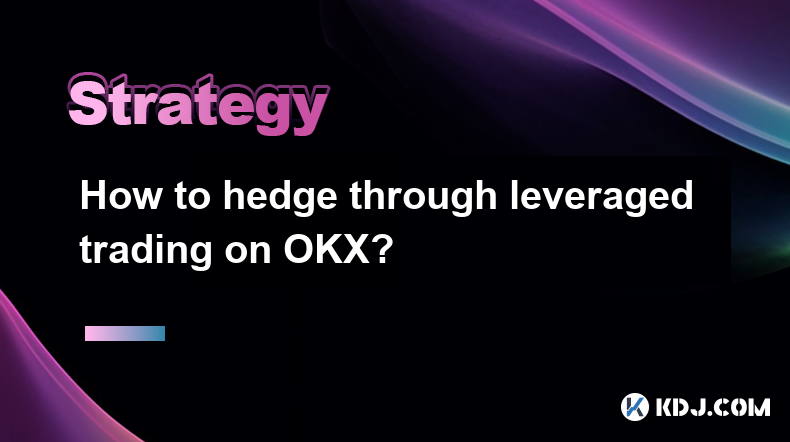
How to hedge through leveraged trading on OKX?
Apr 04,2025 at 01:42pm
Hedging through leveraged trading on OKX can be an effective strategy for managing risk in the volatile cryptocurrency market. This article will guide you through the process of setting up and executing a hedging strategy using OKX's leveraged trading features. We will cover the basics of leveraged trading, how to set up a hedge, and the steps to execut...
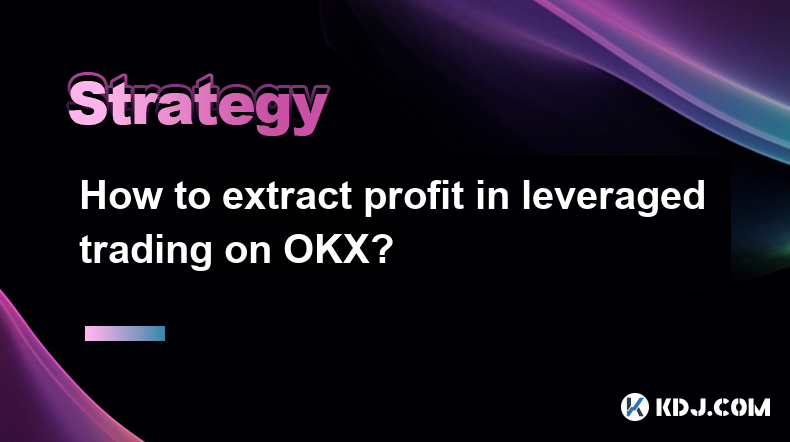
How to extract profit in leveraged trading on OKX?
Apr 04,2025 at 05:42am
Leveraged trading on OKX can be a powerful tool for traders looking to amplify their potential profits. However, it also comes with increased risk, making it essential to understand how to effectively extract profit from these trades. This article will guide you through the process of leveraging OKX's platform to maximize your gains while managing the i...

How to use OKX leverage trading for arbitrage operations?
Apr 07,2025 at 09:50am
Introduction to OKX Leverage TradingOKX is a leading cryptocurrency exchange that offers a wide range of trading options, including leverage trading. Leverage trading allows traders to amplify their exposure to the market by borrowing funds from the exchange. This can potentially increase profits but also comes with higher risks. In the context of arbit...

How to optimize margin usage efficiency in OKX leverage trading?
Apr 04,2025 at 03:21pm
Margin usage efficiency is a critical aspect of leverage trading on platforms like OKX, where traders aim to maximize their returns while managing risk. Understanding how to optimize margin usage can significantly enhance your trading performance. This article will delve into various strategies and techniques to help you make the most out of your margin...

How to set warning price in leveraged trading on OKX?
Apr 07,2025 at 06:49am
Leveraged trading on OKX can be an exciting yet risky endeavor. One of the key tools to manage risk is setting a warning price. A warning price alerts you when your position reaches a certain level, allowing you to take action before it's too late. In this article, we will guide you through the process of setting a warning price in leveraged trading on ...

How to avoid high funding rate losses in leveraged trading on OKX?
Apr 04,2025 at 05:28pm
Understanding Funding Rates in Leveraged Trading on OKXFunding rates are a critical component of leveraged trading on platforms like OKX. They represent the periodic payments made between traders to maintain the balance between the futures price and the spot price of the underlying asset. When trading with leverage, understanding and managing funding ra...

How to hedge through leveraged trading on OKX?
Apr 04,2025 at 01:42pm
Hedging through leveraged trading on OKX can be an effective strategy for managing risk in the volatile cryptocurrency market. This article will guide you through the process of setting up and executing a hedging strategy using OKX's leveraged trading features. We will cover the basics of leveraged trading, how to set up a hedge, and the steps to execut...

How to extract profit in leveraged trading on OKX?
Apr 04,2025 at 05:42am
Leveraged trading on OKX can be a powerful tool for traders looking to amplify their potential profits. However, it also comes with increased risk, making it essential to understand how to effectively extract profit from these trades. This article will guide you through the process of leveraging OKX's platform to maximize your gains while managing the i...
See all articles





















































































